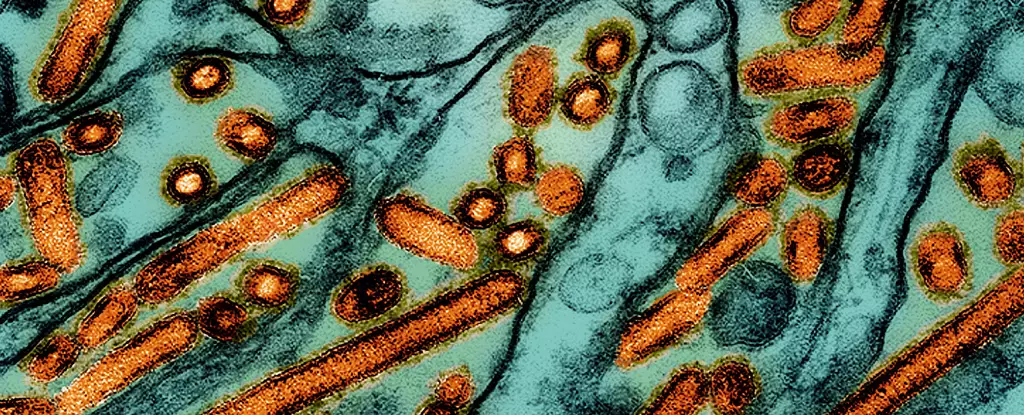The recent announcement from US health authorities regarding the detection of a second case of bird flu in a human, specifically a dairy farm worker in Michigan, has raised concerns about the spread of the virus. This case follows closely after the first case in Texas, indicating that the outbreak of the disease is circulating widely among dairy cows. Despite both individuals experiencing only minor symptoms and making a full recovery, the implications of the virus among farm workers and the potential for further cases remains a point of concern.
The US Centers for Disease Control and Prevention (CDC) has stated that the risk assessment for the general public regarding the H5N1 virus remains “low,” even with the second human infection. However, the CDC does anticipate the possibility of more cases being identified in the future due to the high levels of the virus in raw milk from infected cows and the widespread nature of the virus in dairy cows. While sporadic human infections may occur, the CDC maintains that there is no ongoing spread that would change the overall risk assessment for the general public.
The latest case in Michigan was identified in a worker on a dairy farm where the H5N1 virus had been previously detected in cows. The worker experienced mild symptoms and recovered fully, with the virus being detected in a specimen from the eye. Similar to the Texas case, the patient in Michigan only reported eye symptoms, indicating a potential pattern of symptoms associated with the virus. As of the latest update, a total of 52 US herds have been infected with bird flu across nine states, highlighting the widespread nature of the outbreak among dairy cows.
The US Department of Agriculture has taken steps to provide financial aid to affected farms, including offering protective equipment for employees. While the virus has shown the ability to spread between cows within the same herd and between dairies through cattle movements, the department reassures that infected cows can recover with minimal mortality. The importance of close and prolonged exposure to infected birds or animals as a risk factor for infection is highlighted by the CDC, emphasizing the need for preventive measures on farms where the virus is present.
Though the current strain of H5N1 has primarily affected poultry and has now spread to cows and goats, the risk of mutation remains a concern for health officials. While there is currently no evidence of human-to-human transmission, experts fear that if the virus were to mutate and spread widely, it could potentially become transmissible between humans. The pasteurization of milk effectively kills the virus, ensuring that milk sold in US stores is safe for consumption, but the presence of virus fragments raises questions about the potential for mutation and transmission in the future.
Overall, the recent cases of bird flu in the US highlight the ongoing challenges posed by the virus and the need for continued surveillance, preventive measures, and support for affected farms. As the number of outbreaks in birds and infected mammals continues to rise, it is essential to remain vigilant in monitoring and responding to the evolving threat of avian influenza.


Leave a Reply